This post aims to examine and acquire an understanding of how to Allow Remote Shell Access Policy Using Intune. Our goal is to utilize the configuration profiles within Intune to allow the remote shell access policy.
Allow Remote Shell Access Policy Using Intune setting controls remote shell access. When you enable or don’t configure this policy, the server accepts new remote shell connections. However, if you set this policy to ‘disabled’, the server rejects new remote shell connections.
On the other hand, if you choose to set this policy to ‘disabled’, the server will reject any new remote shell connections. This effectively restricts remote access to the server’s shell, preventing users from establishing remote shell sessions.
Controlling remote shell access through this policy setting is important for security purposes. It allows administrators to manage and restrict who can access the server remotely and execute commands through the shell. By carefully configuring this policy, organizations can ensure that only authorized personnel have the necessary privileges to access and interact with the server remotely.
Windows CSP Details AllowRemoteShellAccess
Let’s go through Windows CSP Details for this Policy setting AllowRemoteShellAccess. This policy setting plays a crucial role in configuring access to remote shells. By enabling or not configuring this policy setting, the server will accept new remote shell connections. It means that authorized users will be able to establish remote shell sessions with the server.
CSP URI – ./Device/Vendor/MSFT/Policy/Config/RemoteShell/AllowRemoteShellAccess

Allow Remote Shell Access Policy using Intune
To create Allow Remote Shell Access Policy Using Intune, follow the steps stated below:
- Sign in to the Intune Admin Center portal https://intune.microsoft.com/.
- Select Devices > Windows > Configuration profiles > Create a profile.
In Create Profile, Select Windows 10 and later in Platform, and Select Profile Type as Settings catalog. Click on Create button.
| Platform | Profile Type |
|---|---|
| Windows 10 and later | Settings Catalog |
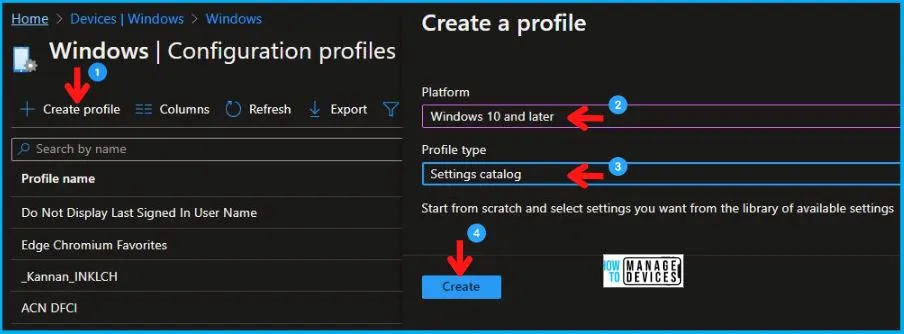
On the Basics tab pane, provide a name for the policy as “Allow Remote Shell Access Policy.” Optionally, you can enter a description for the policy and then proceed by selecting “Next.”
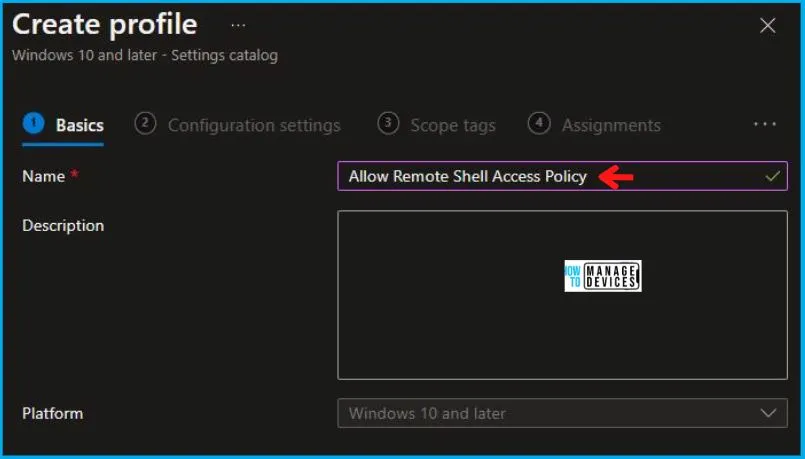
Now in Configuration settings, click Add Settings to browse or search the catalog for the settings you want to configure.
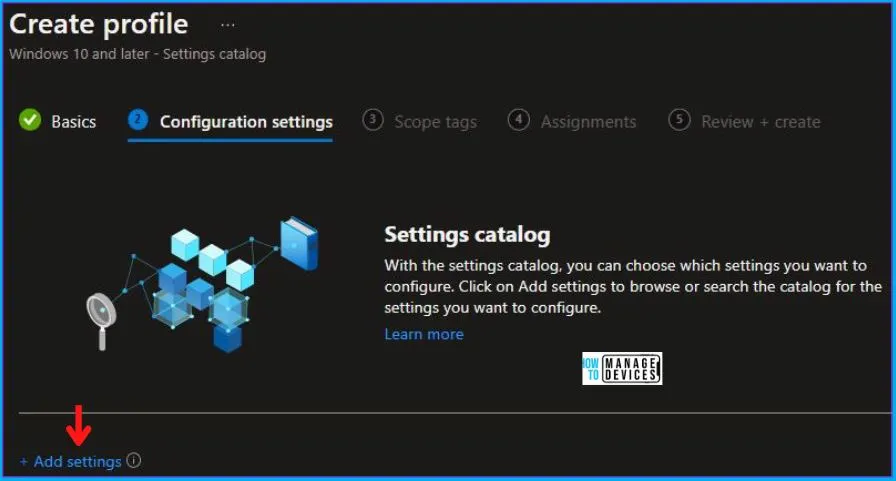
In the Settings Picker windows, search by the keyword Remote Shell, you will see the category Administrative Templates\Windows Components\ Windows Remote Shell, and select this.
When you select the option as stated above, among many, you will see one setting, which is Allow Remote Shell Access. After selecting your setting, click the cross mark at the right-hand corner, as shown below.
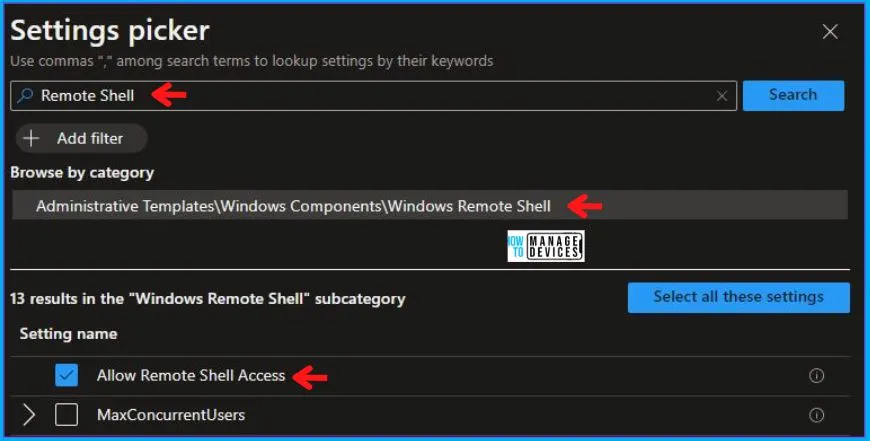
Now, in the Administrative Templates, Enabled the Allow Remote Shell Access, as shown below in the image.
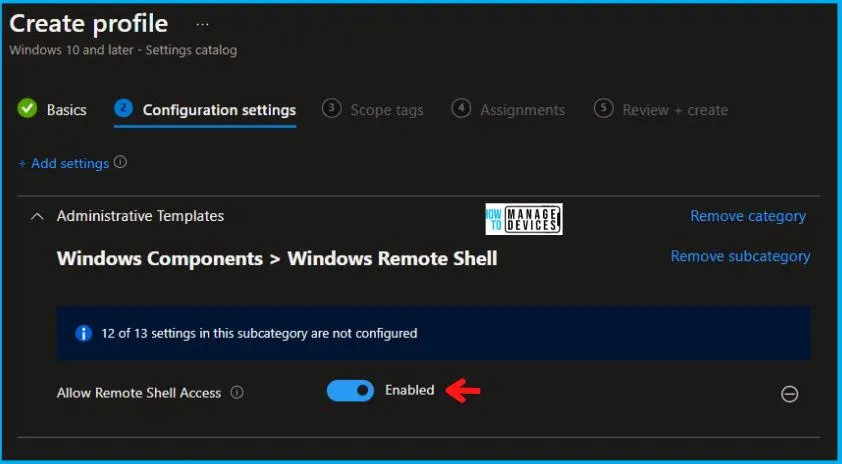
Using Scope tags, you can assign a tag to filter the profile to specific IT groups. One can add scope tags (if required) and click Next to continue. Now in Assignments, in Included Groups, you need to click on Add Groups, choose Select Groups to include one or more groups, and click Next to continue.
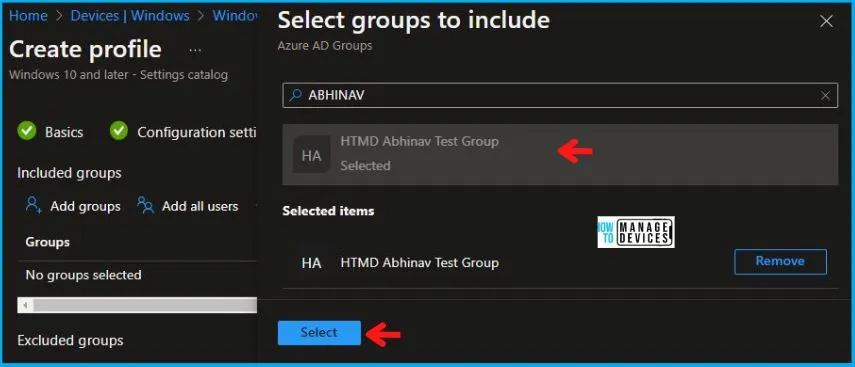
In the Review + Create tab, you need to review your settings. After clicking on Create, your changes are saved, and the profile is assigned.
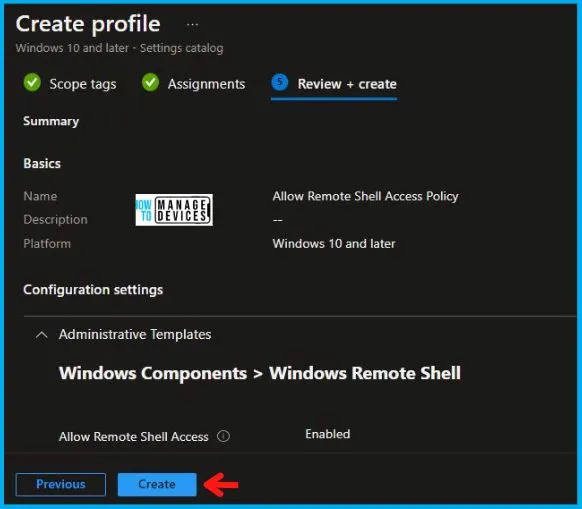
An automatic notification will be displayed in the top right-hand corner to indicate the successful creation of the “Allow Remote Shell Access Policy.” Additionally, you can verify its presence by checking the Configuration Profiles list, where the policy will be clearly visible.
Your groups will receive your profile settings when the devices check in with the Intune service. The Policy applies to the device.
Intune Report for Allow Remote Shell Access Policy
From Intune Portal, you can view the Intune settings catalog profile report, which provides an overview of device configuration policies and deployment status.
To monitor the assignment of the policy, you must choose the appropriate policy from the list of Configuration Profiles. You can check the device and user check-in status to see if the policy has been successfully applied. If you wish to view more information, you can click on “View Report” to see additional details.
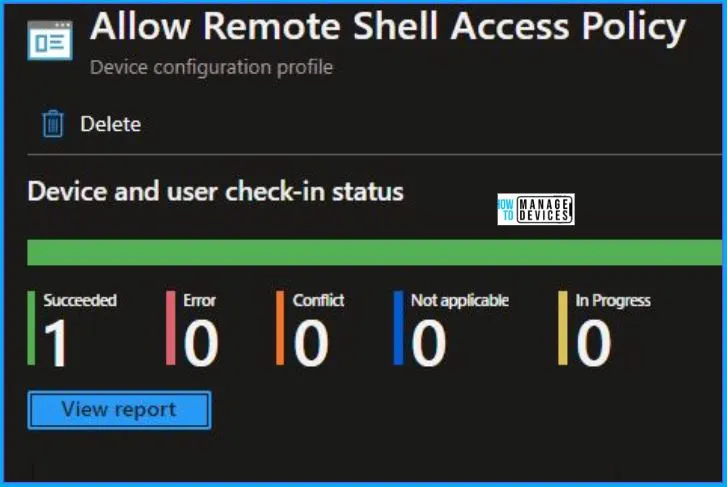
Intune MDM Event Log
To ascertain the successful application of String or integer policies on Windows 10 or 11 devices using Intune, event IDs 813 and 814 can be utilized. By analyzing these event IDs, you can identify both the policy’s application status and the specific value associated with the applied policy on those devices. For this specific policy, the value is a string and is associated with event ID 814.
To confirm this, you can check the Event log path – Applications and Services Logs – Microsoft – Windows – Devicemanagement-Enterprise-Diagnostics-Provider – Admin.
MDM PolicyManager: Set policy string, Policy: (AllowRemoteShellAccess), Area: (RemoteShell), EnrollmentID requesting merge: (E874113F-6CF1-4718-8730-0553BDF7C4AC), Current User: (Device), String: (<enabled/>), Enrollment Type: (0x6), Scope: (0x0).
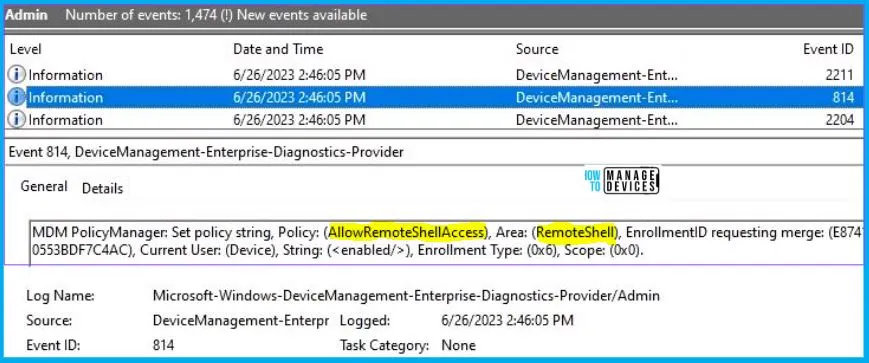
Upon examining the above-mentioned log in the Event Viewer, you will discover crucial details such as the Area and Enrollment ID. These pieces of information are instrumental in identifying the registry path. To find the relevant information, kindly refer to the table provided below:
| Area | Policy | String | Scoped | Event ID |
|---|---|---|---|---|
| RemoteShell | AllowRemoteShellAccess | Enabled | Device | 814 |
The information provided in the above table for Allow Remote Shell Access Policy Using Intune can be utilized to access the registry settings storing group policy configurations on a target computer. By running “REGEDIT.exe” on the target computer, you can navigate to the specific registry path where these settings are stored.
- Computer\HKEY_LOCAL_MACHINE\SOFTWARE\Microsoft\PolicyManager\providers\E874113F-6CF1-4718-8730-0553BDF7C4AC\default\Device\RemoteShell
When you navigate to the above path in the Registry Editor, you will find the registry key with the name AllowRemoteShellAccess. Refer to the table and image below.
| Registry Name | Value |
|---|---|
| AllowRemoteShellAccess | Enabled |

Author
Abhinav Rana is working as an SCCM Admin. He loves to help the community by sharing his knowledge. He is a B.Tech graduate in Information Technology.
